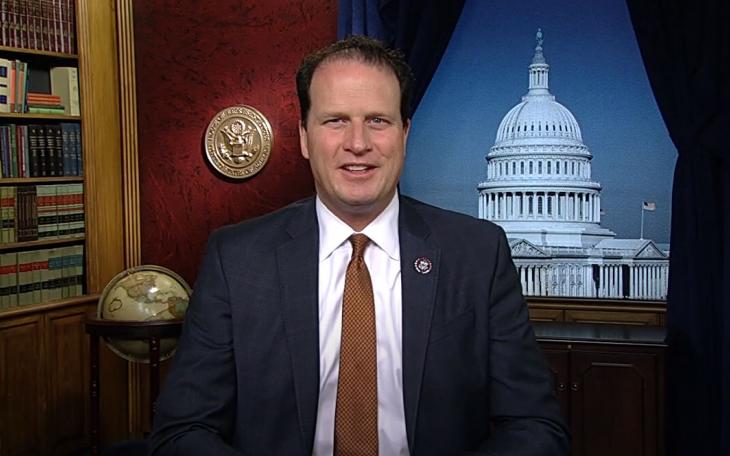Critics of the Hickory Aquifer pipeline into the City of San Angelo introduced an interesting twist in their opposing viewpoints last month.
John Littlejohn of Val Verde Water Co., a Beeville, Texas-based concern, proposed at a San Angelo Tea Party meeting that he can deliver water from the aquifers serving the Del Rio area to San Angelo within two to four years at a price significantly lower than the calculated cost-per-gallon of the soon-to-be-completed Hickory pipeline project.
Littlejohn also presented his plan at the San Angelo City Council on August 6th. He claims his company can execute a plan to build a large water pipeline with specially designed valves made in Italy from just north of Lake Amistad near Del Rio and into the water pipes serving San Angelo. His water will be offered to San Angelo, he said, FOB at price of $3.80 per 1,000 gallons. City staff calculates Hickory water to cost in the neighborhood north of $5 per gallon throughout the life of the city’s $120 million, 20-year loan payment plan for the Hickory project. The price-per-gallon of Hickory water drops if the city pumps more than planned.
Littlejohn’s pipe will be built across the Devil’s River near land owned by the Nature Conservatory just north of Lake Amistad and then follow U.S. 277 north through Sonora to San Angelo.
The plan requires landowners along the pipeline’s proposed route to sell Littlejohn’s company rights-of-way, and if necessary relinquish the rights-of-way via eminent domain. “Our financial models call for a one-time capital expense for purchasing the rights-of-way,” Littlejohn says.
Littlejohn says he has already purchased the water rights from Val Verde County landowners and controls the water he wants to sell. In all, Littlejohn proposes selling up to 60,000 acre-feet of water annually to Midland, Big Spring, Snyder and San Angelo. That amount is roughly three to four times the current water use of Del Rio, the only major municipality within Val Verde County.
Regardless of the ambitious engineering feat of building a pipeline from Del Rio to San Angelo, through some of the most rugged country in Texas, let alone the permitting, land acquisition, and fighting off the environmentalists who will likely sue anyone messing with pristine Devil’s River (they’ll find a turtle, fish, or a Devil’s River minnow to protect), the plan is likely to earn its greatest resistance from the residents of Val Verde County.
“Everyone is seeing water everywhere and dreaming of all of this money they can make. But no one is giving a damn about the people of Del Rio,” Lee Weathersbee says. Weathersbee is a retired rancher and former Del Rio city councilman from the late 1980s and early 1990s. He’s followed the water issue for years. “I remember back when the city was thinking of selling some of its water allotment. Consultants came to the city and told us that we don’t have enough water for that… ‘You have no business giving your water away. You’re in deep sh!t too’.”
Today, Weathersbee says, Del Rio is experiencing a drought just like the rest of west Texas. “Have you been to Del Rio lately? It’s brown. No one can afford to water their lawns. It’s not the ‘Green Valley’ anymore,” he says, referring to the English translation of the county’s Spanish name. Weathersbee recounts that since the city was required to build a $43 million water treatment plant in the early 2000s, residents have seen water rates increase eleven times.
Val Verde County Judge Laura Allen, the only Republican county judge on the Texas-Mexico border, believes in preserving property rights. But, she warns that if west Texas or I-35 corridor municipalities start large projects to harvest water from under Del Rio that “the people are going to be furious. They don’t want it.”
“No one wants private property rights infringed, but no one wants to run out of water, either. We don’t have all of the facts about what’s underneath us and there are too many conflicting studies,” Allen continues.
“Depending on the point-of-view they’re coming from, they’ll pick a study that proves their point,” she says.
Val Verde County has no water board regulating the sale or use of water. So, Littlejohn can purchase water rights from large landowners and the Texas laws on right of capture make it legally, and perhaps technically possible to be able to sell 60,000 acre-feet out of the Edwards-Trinity, the aquifer below Val Verde County.
Weathersbee says that the lack of a governing water district for the county is by design, because the landowners don’t want a government body controlling their water rights. They want to have the option to sell it or use their water as they please, he says.
“Without a regulating body, it’s the wild west out here,” Judge Allen adds.
“My position is that we’re the guardians, the last stop. The county [water sources above Lake Amistad] also has people south of us, and one of them is a city of 44,000, Del Rio. And some of those springs Littlejohn references flow into Amistad. We don’t know how that will affect Amistad or the counties below us, all the way down to the [Rio Grande] Valley,” Allen says.
Littlejohn counters that if the water is harvested before it reaches Lake Amistad that, “we don’t have to split it with the Mexicans.”
“All of the aquifers go into the Rio Grande,” Weathersbee counters. “You’ll cause an international incident if he gets his way.”
Weathersbee references the late 1980s court battles in which the City of Del Rio fought to prevent nuclear waste from being dumped in Dryden, a ghost town west of Del Rio and in Spofford, a small town between Del Rio and Eagle Pass. Weathersbee says the City of Del Rio was able to convince the City of Eagle Pass and the City of Laredo to join in the legal battle because the Del Rio litigants argued that the nuclear waste would pollute all water supplies from Del Rio to Brownsville. “All the water down here is connected one way or the other,” Weathersbee says.
The crown jewel of Del Rio is the San Felipe Springs on the east side of town. The Springs serve as the primary water source for the city. “The city has exactly 11,416 acre-feet adjudicated to it from the Springs,” Weathersbee says. The rest of the city’s water comes from groundwater wells north of the city. “All of the available water is adjudicated in the City of Del Rio and Lake Amistad is 10% oversold,” he says.
During water fights throughout the 2000s, Del Rio residents were reminded that Fort Clark Springs, located 30 miles east in Brackettville went dry. Littlejohn says that was a natural occurrence unrelated to water use.
Facts won’t matter, though.
The Fort Clark Springs example is a visible, recent warning to the people in Val Verde County that the same thing can happen to their San Felipe Springs. “The people will be very alarmed with anything that risks even reducing the flow in San Felipe Springs,” Weathersbee says.
Littlejohn remains an optimist that he can sell his plan. To date, none of the west Texas municipalities or San Antonio have accepted his offer.
Subscribe to the LIVE! Daily
Required






Comments
Listed By: Jim Turner
- Log in or register to post comments
PermalinkListed By: Joe Hyde
Jim--
I didn't get the impression that the city will have to abandon Hickory to go with this plan. Littlejohn needs the CRMWD infrastructure to distribute the water to Midland/Odessa, Big Spring, Snyder and San Angelo. The CRMWD hasn't been cooperative, so Littlejohn's only option is to try to seat folks favorable to his proposal on the board. His presentation to the Tea Party was identical to the city council presentation, but at the Tea Party meeting, he showed an additional slide on how to overthrow the CRMWD board. The mayor wasn't buying this at all. Only Farmer and Wardlaw were ready to sign up right away. The thing died and council said they'd investigate on their own and bring it up again if it appears viable.
- Log in or register to post comments
PermalinkListed By: Jim Turner
- Log in or register to post comments
Permalink- Log in or register to post comments
Permalink- Log in or register to post comments
Permalink- Log in or register to post comments
PermalinkPost a comment to this article here: